
Stonecutters Island or Ngong Shuen Chau is a former island in Victoria Harbour, Hong Kong. Following land reclamation, it is now attached to the Kowloon Peninsula.
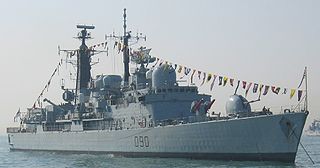
HMS Southampton was a batch two Type 42 destroyer of the Royal Navy. She was named after the city of Southampton, England, and built by Vosper Thornycroft, in Southampton. She was the sixth Royal Navy ship to bear the name.

The Sea Cadet Corps is a national youth charity. It is present in England, Scotland, Wales, Northern Ireland, Malta and Bermuda. Cadets follow an ethos, training plan and rank structure similar to that of the Royal Navy, and are recognised by the UK Ministry of Defence.
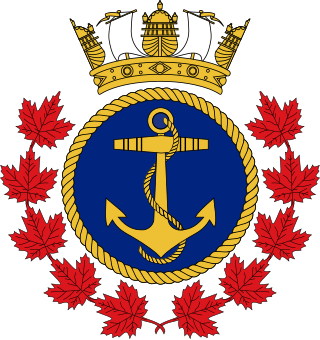
The Royal Canadian Sea Cadets is a Canadian national youth program sponsored by the Canadian Armed Forces and the civilian Navy League of Canada. Administered by the Canadian Forces, the program is funded through the Department of National Defence, with the civilian partner providing support in the local community. Cadets are not members of the Canadian Armed Forces.
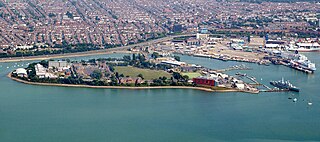
HMS Excellent is a Royal Navy "stone frigate" sited on Whale Island near Portsmouth in Hampshire. HMS Excellent is itself part of the Maritime Warfare School, with a headquarters at HMS Collingwood, although a number of lodger units are resident within the site including the offices of the First Sea Lord.

A training ship is a ship used to train students as sailors. The term is mostly used to describe ships employed by navies to train future officers. Essentially there are two types: those used for training at sea and old hulks used to house classrooms. As with receiving ships or accommodation ships, which were often hulked warships in the 19th Century, when used to bear on their books the shore personnel of a naval station, that were generally replaced by shore facilities commissioned as stone frigates, most "Training Ships" of the British Sea Cadet Corps, by example, are shore facilities.
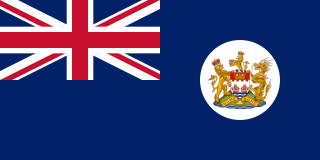
British Forces Overseas Hong Kong comprised the elements of the British Army, Royal Navy and Royal Air Force stationed in British Hong Kong. The Governor of Hong Kong also assumed the position of the commander-in-chief of the forces and the Commander British Forces in Hong Kong took charge of the daily deployment of the troops. Much of the British military left prior to the handover of Hong Kong to China in 1997. The present article focuses mainly on the British garrison in Hong Kong in the post Second World War era. For more information concerning the British garrison during the Second World War and earlier, see the Battle of Hong Kong.
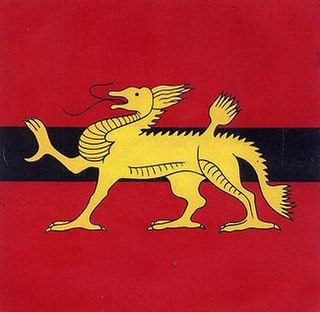
The Hong Kong Military Service Corps (HKMSC) was a British army unit and part of the British garrison in Hong Kong. Throughout the history of Hong Kong, it has been the only regular British army unit raised in the territory made up almost entirely of Locally Enlisted Personnel (LEP).
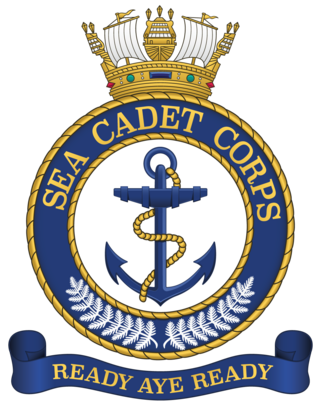
The NewZealandSea Cadet Corps is one of the three corps in the New Zealand Cadet Forces, the other two being the Air Training Corps, and New Zealand Cadet Corps. It is a military-style training organisation for young people between the ages of 13 and 21. Activities include sailing, and boat work, ropework shooting and drill, amongst other activities, many of which involving the other branches of the NZCF. Cadets need to pass an annual swimming test to undertake water-based activities.
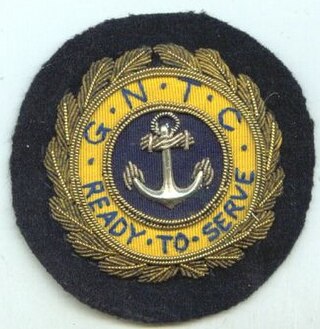
The Girls' Naval Training Corps was formed as part of the National Association of Training Corps for Girls in 1942, with units mainly in Southern England. Its objective was congruent with that of the Sea Cadet Corps, teaching girls aged 14 to 20 the same seamanship skills as the SCC taught the boys, in preparation for service with the Women's Royal Naval Service.

The Bermuda Sea Cadet Corps was created in 1966 and registered as a charity under the Bermuda Sea Cadet Association Act, 1968. The first unit had actually been created two years earlier.
The Hong Kong Adventure Corps is a voluntary uniformed group subsidised by the Hong Kong government and the Hong Kong Jockey Club. It was created in 1995 with ties to the British Army's Army Cadet Force and Combined Cadet Force. Like the Hong Kong Sea Cadet Corps and Hong Kong Air Cadet Corps, the HKAC exists to serve the Hong Kong community. The HKAC's values are based in those of the British Army, providing a tough and challenging training with a distinctive military tone of discipline and esprit de corps.
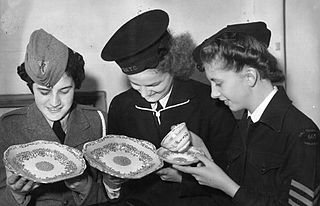
The National Association of Training Corps for Girls was formed in the United Kingdom in 1942 by the then Board of Education. It was the umbrella organisation for the Girls Training Corps (GTC), the Girls' Nautical Training Corps (GNTC), and the Women's Junior Air Corps (WJAC), which had all formed in the years prior.
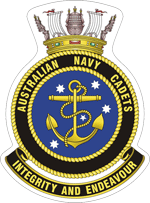
The Australian Navy Cadets (ANC) is a leading national youth development organisation, with the character and values of the Australian Navy, founded on a strong community partnership, fostering and supporting an ongoing interest in the Australian Navy.

The Nautical Training Corps (NTC) is a National Maritime Training and Uniformed Youth Organisation based in the south of England. Registered Charity Number: 306084, Cadets follow similar rates and ranks, traditions, values and ethos as the British Royal Fleet Auxiliary (RFA) and the Merchant Navy.
The Volunteer Cadet Corps (VCC) is a national youth organisation managed by the United Kingdom's Royal Navy and sponsored by the UK's Ministry of Defence. The VCC comprises:
The Hong Kong Naval Volunteer Force (HKNVR) was a volunteer navy established in 1933. In 1939, it was granted the Royal Naval Volunteer Reserve status and was renamed Hong Kong Royal Naval Volunteer Reserve (HKRNVR). In 1959, it was renamed the Hong Kong Royal Naval Reserve (HKRNR) after bring absorbed directly into the Royal Naval Reserve. It was disbanded in 1967.
SS Tai Hing was a river steamer built in 1927. In 1940, she was given to the Hong Kong Royal Naval Volunteer Reserve (HKRNVR) and replaced HMS Cornflower as the headquarters of the unit. She was renamed HMS Cornflower after its predecessor. To avoid confusion, the ship was sometimes referred to as HMS Cornflower II.
HMS Cornflower was an Arabis-class sloop of the Royal Navy and from 1933 the Hong Kong Naval Volunteer Force (HKNVR).

The University Royal Naval Unit East Scotland is one of 17 University Royal Naval Units and a Royal Navy training establishment based in Scotland, accepting roughly 65 Officer Cadets from universities in Edinburgh, Fife and the Tayside region. It is one of the University Service Units and is under the command of Britannia Royal Naval College, Dartmouth. The unit's affiliated P2000 ship is HMS Archer, which is predominantly used for training Officer Cadets.





























